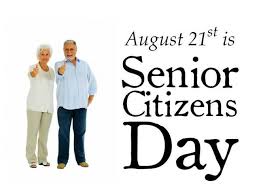World Pediatric Bone and Joint Day – October 19, 2022, history, significance
World Pediatric Bone and Joint Day occurs every October 19. According to the American Academy of Orthopedic Surgeons, more than 126 million Americans are impacted by musculoskeletal conditions. Many cases are brought on by obesity developed during childhood. World Pediatric Bone and Joint Day highlights obesity, screening, and prevention. The day also looks at symptoms, treatment, and economic impact.
WORLD PEDIATRIC BONE AND JOINT DAY RELATED HOLIDAYS
National School Backpack Awareness Day
Every third Wednesday of September is National School Backpack Awareness Day. This day was created to ensure children are wearing their backpacks properly and safely. Improper use of backpacks can cause back pain, discomfort, and even permanent injury. A simple backpack adjustment can prevent lifelong pain in children and also increase focus in the classroom.
National Walk and Bike to School Day
National Walk and Bike to School Day comes around yearly on the first Wednesday of October. The purpose of this day is not only to encourage children to get up and get moving before they’re stuck in class for hours, but also to develop a sense of confidence in themselves and their communities.
National Children’s Dental Health Month
National Children’s Dental Health Month comes around every February. Several children see brushing their teeth as a torturous chore, while many parents struggle to get their children to brush their teeth properly. February is all about teaching kids how important dental hygiene is for their health now so that it doesn’t develop into a toothache later.
HISTORY OF WORLD PEDIATRIC BONE AND JOINT DAY

While the first Pediatric Bone and Joint Day — or PB&J Day — wasn’t celebrated until 2012, orthopedic medicine has far longer roots. Originally, the term “orthopedic” referred specifically to the correction of musculoskeletal deformities in children. Nicolas Andry, who was a professor of medicine at the University of Paris, coined the term in his textbook published in 1741
. This book, which was directed towards parents, advocated for exercise, manipulation, and splinting to treat child bone deformities. 40 years later, In 1780, Jean-Andre Venel opened the first orthopedic institute, which was dedicated to treating children’s skeletal deformities.
The modern hip replacement was introduced in the 1960s by English tribologist Sir John Charnley, who made the connection that implants can be used to replace joint surfaces. He designed a one piece stainless steel femoral stem & head and an acetabular component, both of which were used to fix the bone along with bone cement. The Charnley Low Friction Arthroplasty and designs that evolved from it were used for over two decades for hip replacement procedures. In the 1970s knee replacements, using similar technology, commenced for patients with rheumatoid arthritis.
USSR doctor, Gavril Abramovich Ilizarov, made a major contribution to orthopedic procedures without much training in the specialized field. Sent to look after Russian soldiers in 1950s Siberia, he came face to face with crippling conditions, infections, and bone malalignments. Employing the assistance of a nearby bicycle shop, he invented external ring fixators, similar to the spokes on a bike. With this, he was able to heal, realign, and lengthen to an unprecedented degree. The Ilizarov appartus is still used by surgeons to this day.
WORLD PEDIATRIC BONE AND JOINT DAY TIMELINE
1903
Osgood-Schlatter Disease
Robert Osgood and Carl Schlatter concurrently described the disease which now bears both of their names. This disease is a common cause of knee pain in adolescents.
2012
First Pediatric Bone and Joint Day
The first World PB&J Day focused on vitamin D deficiencies.
2016
A new U.S. report highlighted the problem
The report from the United States Bone and Joint Initiative estimated 126.6 million Americans are impacted by a musculoskeletal condition.
2016
Studies show it is impacting workers worldwide
The Global Burden of Disease listed musculoskeletal conditions as the second highest contributor to global disability, behind lower back pain.
HOW TO OBSERVE WORLD PEDIATRIC BONE AND JOINT DAY
Reach out to people
Don’t feel like you need to give them advice, but at least offer them some resources that are available. Sometimes, just knowing someone is in their corner can be just the catalyst they need to seek treatment.
Spread the word
The Bone and Joint Initiative has printable posters on their website. Print a few out and spread them around your child’s school, a neighborhood store, or community center. The two kinds of posters explain the basics of bone and joint health in both English and Spanish.
Get social
There are all kinds of online resources for families dealing with pediatric bone and joint problems. Help get those resources to the people that need them.
4 TIPS TO PROTECT YOUR BONES AND JOINTS
Exercise if you are able
Staying active and stretching will help your bones and joints stay strong and loose.
Eat a healthy diet
Fresh fruits and vegetables, protein, and other nutritious vitamins is essential to creating strong bones and joints.
Watch your weight
Keeping weight off puts less pressure on your bones and joints, which in turn keeps them healthy.
Know your limits
Overdoing it can be costly. Make sure you are staying aware of your body and addressing any aches and pains.
WHY WORLD PEDIATRIC BONE AND JOINT DAY IS IMPORTANT
We have much to learn
Children around the world experience bone and joint problems. This day strives to help those with and without them learn about the causes, symptoms, and treatments.
It pushes prevention
Childhood obesity is a big contributor to bone and joint problems both as a child and later in life. Understanding the long-term consequences and learning techniques to lose weight contribute to preventing problems in the first place.
It highlights other issues
Childhood obesity also causes many other health problems, like diabetes and heart disease. Understanding one of the repercussions of obesity like bone and joint problems, can help clarify the larger problem.
Sandeep Raiza — Content Writer, Website Designer, SEO Strategist, and WordPress Expert AI specialist delivering impactful digital solutions that drive business growth.Combining creative storytelling with technical expertise.



